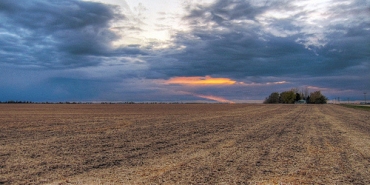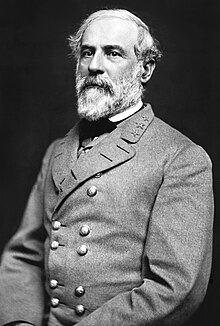It seems like most of the time I spend down at Oswego’s Little White School Museum these days is far too often devoted to paperwork of one kind or another.
It’s remarkable, actually, how much record-keeping goes into maintaining a museum collection, especially one that keeps on growing like ours does. Because, as I’ve told numerous visitors over the years, the trick’s not cataloging an item, safely storing it in proper media to assure its preservation, or putting it on a shelf or in a drawer. It’s finding it again after you do all that.
So any time I can get involved in doing actual history I consider golden. And one of those golden opportunities popped up earlier this month.
After my buddy, assistant museum director Bob Stekl, and his band of enthusiastic volunteers got this year’s “Remembering Our Veterans” exhibit mounted and opened (it ran Nov. 4-12 this year), Bob was giving a tour to a group of Cub Scouts when he realized something important appeared to be missing.
In each year’s exhibit, we feature a special section on those Oswegoans who were killed in action, from the Civil War through Vietnam. The World War II section of the special exhibit included posters honoring five local residents killed in action: Frank Clauser, Kay Fugate, Donald Johnson, Stuart Parkhurst, and Paul Ellsworth Zwoyer Jr.
But when Bob and the group of Scouts moved on to another part of the exhibit and he started explaining about the community’s World War II service flag, he noticed something didn’t add up. The large service flag had a blue star on it for every community resident, male or female, serving in the war. When one of them was killed in action, their blue star was replaced with a gold star. And there were six, not five, gold stars on that flag.

The students and teacher at Squires School in 1935. Elwyn Holdiman is circled in the back row. Squires School was located at the northeast corner of U.S. Route 34 and Old Douglas Road just east of Oswego. (Little White School Museum collection)
After the tour was over, Bob headed back down into the museum archives to figure out what was going on. It didn’t take long before he found our missing gold star serviceman, Corporal Elwyn Holdiman.
When Bob told me about it the next day, we decided a poster honoring Holdiman’s service was needed right away, and so I started gathering information about him, all the while thinking that last name sounded familiar. We got the poster up later that day, but I continued to research Holdiman and his family for the biographical file we started on him.
It turned out the Holdimans had been in America for a long, long time. Elwyn’s sixth-times great grandparents, Christian and Christina Haldeman (the name evolved over the years), immigrated to Pennsylvania from the German-speaking Swiss canton of Bern sometime prior to 1716 when their son, Johannes (Elwyn’s fifth-times great grandfather), was born in Pennsylvania’s Chester County. Johannes and his wife, Anna Marie ventured into the Virginia frontier of the 1750s, where Anna Marie was killed by Indians in 1758 during the French and Indian War. Their descendants subsequently settled in and around Lancaster, Pennsylvania, remaining for several decades before heading west with so many of their Pennsylvania German-speaking neighbors, to the rich prairies of Wheatland Township in Will County.
Elwyn’s great-grandfather, Joseph Holdiman, made that trip, probably in the late 1840s, and in 1850 married Catherine Lantz, newly arrived with her family, also from Pennsylvania. The couple had eight children before they decided to seek their fortunes farther west in Black Hawk County, Iowa. Their son, also named Joseph, born in Wheatland Township, stayed in the Wheatland area where he and his wife raised their family, including a son named Albert, Elwyn’s father.
Albert and his wife, Emma Lombard Holdiman, farmed in the area around Yorkville and Oswego, where they raised their 10 children. Elwyn, their third child, was born on January 20, 1920 in Oswego Township and attended the one-room Squires School at modern U.S. Route 34 and Old Douglas Road near Oswego and worked as a farmhand. And that’s what he was doing when he was drafted.

Plan view of an M4 Sherman tank, arguably the most successful tank of World War II. Elwyn Holdiman operated his tank’s main gun.
On the day after his 22nd birthday, the Jan. 21, 1942, Kendall County Record’s “Oswego” news column reported that: “Oswego men selected for induction from the local draft included Cecil E. Carlson, Paul T. Krug, John Lewis, Elwyn Holdiman, and Charles Sleezer.”
After basic training, Pvt. Holdiman was assigned to the tank corps and was trained as a gunner on the M-4 Sherman Tank, the standard U.S. tank of World War II. The gunner controlled the tank’s main 75mm gun, and the .30 caliber machine gun mounted in the turret beside the main gun, though he followed the tank commander’s orders on what to shoot. Each weapon was fired with a foot switch on the gunner’s footrest. The gunner controlled the turret either with a hydraulic system independent of the tanks motor, or a manual back-up system using a crank and gears. Although the Sherman gunner’s view was very limited, it was better than most other tanks of the era. A good gunner working with a good loader in the 75mm armed Sherman could get off two or three aimed shots in very short time, a big advantage in combat.

U.S. Army’s 7th Armored Division shoulder patch
He was sent to Company C, in the 17th Tank Battalion, part of the brand new 7th Armored Division, activated at Camp Polk, Louisiana, under command of Gen. Lindsay Silvester on March 1, 1942. The division trained in Louisiana and Texas through early November 1942 and then underwent desert training in California. Then it was back east for more training at Ft. Benning, Georgia. Along the way, Pvt. Holdiman was promoted and became Corporal Holdiman.
On June 6, 1944, the day the Allies waded ashore on the beaches at Normandy, Holdiman and the rest of the men of the 7th Armored Division embarked aboard the SS Queen Mary in New York harbor for a fast trip across the Atlantic to England. After final training in England, they boarded landing craft bound for Normandy, the division going ashore on Omaha and Utah Beaches, Aug. 13-14. Once ashore, they were assigned to Gen. George S. Patton’s newly activated U.S. Third Army.

U.S. Army M4 Sherman tank.
As part of Patton’s breakout from the Normandy beachhead, the division drove through Nogent-le-Rotrou to take Chartres on Aug. 18, then on Verdun, and finally across the Moselle River.
In late September, the 7th Armored Division was tasked with supporting Operation Market Garden, the combined arms invasion of the Netherlands recounted in the movie, “A Bridge Too Far.” From Sept. 29 to Oct. 6, they fought in the Battle for Overloon and from Oct. 7-26 were in action around Griendtsveen and patrolling around Ell-Weert-Meijel-Deurne, before they were engaged in the Battle of the Canals starting Oct. 27.
In a tank battle on Oct. 29 against the German 9th Panzer Division a couple miles from Heusden west of the Asten/Meijel Road, Cpl. Holdiman’s Sherman tank was destroyed by enemy fire while Company C was supporting an infantry push. He was killed in action, along with the rest of the crew (which was one man short, the assistant gunner position), 2nd Lt. Robert W. Denny, the tank’s commander; loader and machine gunner Pvt. Michael Ferris; and Tec 4 Leo W. Goers, the tank’s driver.
According to the after action report concerning Company C filed by the 17th Tank Battalion about the action on Oct. 29: “This Company did an excellent job but they lost Lt. DENNY who had just recently been Commissioned from the ranks, he had previously been a Platoon Sergeant in the same Company, Lt. DENNY was an excellent leader and his loss is a great loss to the Company. “C” Company lost four tanks in this action and they definitely knocked out five German Tanks.”

Corporal Elwyn Holdiman’s memorial on the Holdiman family marker in Lincoln Memorial Park, Oswego Township.
Elwyn’s parents, Albert and Hazel Holdiman, were first notified that he was missing in action before they finally learned he had been killed. While his remains were buried in Europe, the family erected a marker in the memory of his sacrifice in Oswego Township’s Lincoln Memorial Park.
And the fact that the Holdiman name sounded familiar to me? It turned out that Elwyn and I are third cousins—I remembered the name from my family history. My great-great grandfather’s sister, Catherine Lantz, married Joseph Holdiman. They were Elwyn’s great-grandparents.
Strangely enough, Holdiman’s sacrifice was not commemorated, as were the ultimate sacrifices of virtually every other local soldier and sailor.
But we’ve gone a bit towards rectifying our own oversight, as well as that committed by anyone else since that day in late October 1944 when Elwyn Holdiman’s Sherman tank was destroyed by German gunfire. And in so doing, we’ve uncovered another piece of the history of the Oswego area that, hopefully, won’t be forgotten again.







